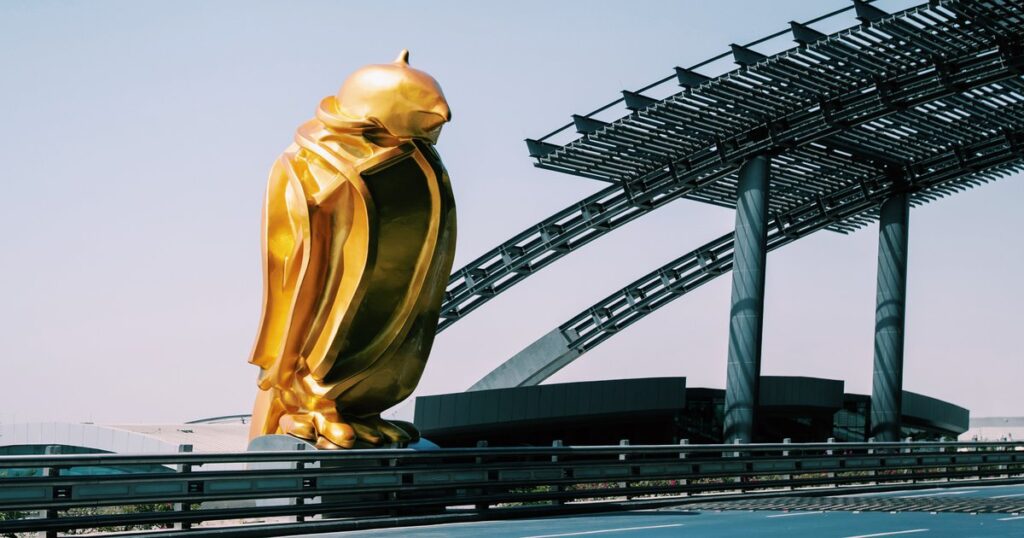
“Falcon” is one of the renowned public arts outside the departures hall of Hamad International Airport that was created by a Dutch sculptor Tom Claassen and was installed in Qatar in July 2021. This sculpture was made with a view to portraying the significance of nature and wildlife by an abstract representation of Qatar’s national bird.
Looking closely at the details of how this sculpture was created, it seems that even though the artist’s intention was to depict and appreciate the wildlife, there is still found vivid details about the sculptor that ‘almost’ camouflages the true identity of the bird. As an illustration, the falcon is covered in a fabric of Qatar’s traditional attire and the lines/curves on its feathers are found in the Arabic calligraphy; which definitely serves the purpose of representing the national identity of Qatar but does it really depict the wildlife in its natural habitat?
Moreover, the main objective of installing this sculpture in the airport is because the falcon acts as a clear parallel with the aviation routes from Qatar to the rest of the world. Thus, this reminds me of the reference of Greg Garrard’s reading Ecocriticism, where he explores the representation between the human and nonhuman, as it is shown in what he refers to it as “large scale metaphors”. As per the sculpture, the falcon is the metaphor representing the national identity of Qatar as well as ‘allegedly’ depicting the wildlife. However, I strongly argue that if Tom Claassen aimed to create this sculpture with an intention of representing the natural wildlife, he should have let the falcon exhibit its authenticity in its true natural habitat. But unfortunately, from the audience’s perspective, the first thing we see is the golden coverage that immediately evokes the atmosphere of royalty, rather than nature or environment. Second, the facial expression of the falcon is not visible at all – stressing on the fact that the falcon as a bird is barely significant. Thus, I agree with Garrard’s Ecocriticism because he is explicitly implying that the major task for ecocriticism is the ‘reconsideration of the idea of ‘the humans’’, since at the end of the day ‘the humans’ always strive to achieve what is best for them.
Furthermore, referring back to “Positions” a chapter from Garrard’s Ecocriticism, it seems that the critiques of deep ecology still see human activity as “unnatural”, in the sense of completely separating it from nature. And Garrard connotes that humans hold this position deceitfully, because they keep repeating what they are doing, as it allows them to be benefited from what they are doing. And comparing this thought with the sculpture created by Tom Claassen, we see that the activity of creating the sculpture is more or less “unnatural” and most probably, there will be more public art installations that entail the ‘notion of depicting and appreciating the nature and wildlife’, but in fact pursuing the projects that is for the most part advantageous for their personal interest.
Bibliography:
- Fabrique. “Falcon by Tom Claassen.” Qatar Museums. Accessed October 28, 2022. https://qm.org.qa/en/visit/public-art/tom-claassen-falcon/.
- “Ecocriticism (2012) – Nature in Children’s Literature and Culture.” Accessed October 28, 2022. https://blogg.hvl.no/nachilit/2017/05/29/greg-garrard-2012-ecocriticism-new-york-routledge/.
- Google Docs. “Garrard_positions.Pdf.” Accessed October 28, 2022. https://drive.google.com/file/u/1/d/1sNz2Tz0PoajurxfNs-8gfdW9egvK3Y4M/view?usp=drive_web&usp=embed_facebook.